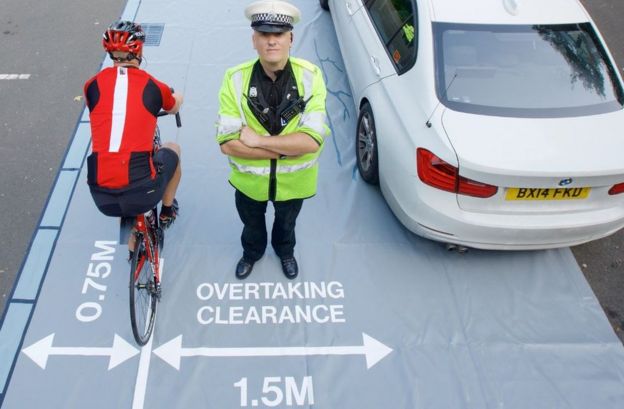| Toll Free : 1844 495 7333(injury hotline- new cases only) | |
| Text a Personal Injury Lawyer 24/7 and get instant help.TM (416 931 5015) | |
| Head Office : 905 495 7333 |
What Every Cyclist Should Know: A Legal Overview
June 17, 2017Brampton personal injury lawyers understand that with winter blues becoming a thing of the past, more and more people are taking out their bicycles. Ontario’s major cities are among the most cycling-friendly cities in the world. Toronto alone accounts for a daily downtown count of at least 19,000 cyclists who use the roads between 7 am and 7pm. This activity allows people to enjoy the exercise and be a part of the eco-friendly movement while traveling around town for work, sport or entertainment. However, cyclists remain among the most vulnerable of road-users along with pedestrians and motor-cyclists.
A recent report released by Ontario’s Chief Coroner reveals alarming statistics. One of the findings states in unequivocal terms that 100% cycling fatalities were preventable. To quote from the study, “…..this hypothesis held true in each and every death we reviewed.”
Cycling accidents like most other types are avoidable. A majority of them are caused by someone’s fault or negligence. Cyclists themselves may be partly responsible for collisions, but it’s also the duty of motor-vehicle drivers to ensure that they drive responsibly and stay alert. If you or a dear one has been injured in a bicycle/motor-vehicle collision, consult an experienced car accident lawyer without delay. You may be entitled to compensation.
Know Your Rights
The Ontario Ministry of Transportation rules clearly specify that cyclists should know highway and traffic regulations before they take to the roads. They don’t require license-plates, registration, vehicle insurance or driver’s license. There’s no age limit to riding. They cannot carry passengers if their vehicle is meant only for a single rider. Cyclists are considered to be road-users like all others who share the road. They are subject to the same traffic laws, and have the same rights/responsibilities as other road-users.
Since January 1, 2017, several new guidelines have been in force regarding laws that cyclists must obey. Some of these laws concern motor-vehicle drivers too, such as the One Meter Passing law, Dooring, use of intermittent flashing-lights by cyclists, increasing fines for non-compliance in use of reflective clothing etc, and the wearing of helmets.
Cyclists must ride far from the curb to stay clear of sewer-grates, debris, parked-car doors etc. They’re also allowed to occupy any part of the lane if their safety warrants it.
As more awareness is being created and cyclists are now a familiar sight on our roads, it important to take stock of how general traffic rules can be made more convenient to accommodate them. Advocacy groups like Cycle Toronto recommend that the provincial laws be changed to allow bikers to follow the Idaho stop rules which treat stop signs as yield signs and red lights as stop signs. Cycles are vehicles governed by the laws of momentum and such cycle-friendly regulations can go a long way in reducing collisions and clearing misunderstandings about cyclist behavior and driving styles.
Injuries sustained in cycling accidents can have serious physical, financial and emotional consequences on not just the injured victim but also on the entire family.
Our 24×7 injury lawyers can help to protect your rights and ensure that you get the compensation you deserve.
What Every Cyclist Should Know: A Legal Overview
June 17, 2017Brampton personal injury lawyers understand that with winter blues becoming a thing of the past, more and more people are taking out their bicycles. Ontario’s major cities are among the most cycling-friendly cities in the world. Toronto alone accounts for a daily downtown count of at least 19,000 cyclists who use the roads between 7 am and 7pm. This activity allows people to enjoy the exercise and be a part of the eco-friendly movement while traveling around town for work, sport or entertainment. However, cyclists remain among the most vulnerable of road-users along with pedestrians and motor-cyclists.
A recent report released by Ontario’s Chief Coroner reveals alarming statistics. One of the findings states in unequivocal terms that 100% cycling fatalities were preventable. To quote from the study, “…..this hypothesis held true in each and every death we reviewed.”
Cycling accidents like most other types are avoidable. A majority of them are caused by someone’s fault or negligence. Cyclists themselves may be partly responsible for collisions, but it’s also the duty of motor-vehicle drivers to ensure that they drive responsibly and stay alert. If you or a dear one has been injured in a bicycle/motor-vehicle collision, consult an experienced car accident lawyer without delay. You may be entitled to compensation.
Know Your Rights
The Ontario Ministry of Transportation rules clearly specify that cyclists should know highway and traffic regulations before they take to the roads. They don’t require license-plates, registration, vehicle insurance or driver’s license. There’s no age limit to riding. They cannot carry passengers if their vehicle is meant only for a single rider. Cyclists are considered to be road-users like all others who share the road. They are subject to the same traffic laws, and have the same rights/responsibilities as other road-users.
Since January 1, 2017, several new guidelines have been in force regarding laws that cyclists must obey. Some of these laws concern motor-vehicle drivers too, such as the One Meter Passing law, Dooring, use of intermittent flashing-lights by cyclists, increasing fines for non-compliance in use of reflective clothing etc, and the wearing of helmets.
Cyclists must ride far from the curb to stay clear of sewer-grates, debris, parked-car doors etc. They’re also allowed to occupy any part of the lane if their safety warrants it.
As more awareness is being created and cyclists are now a familiar sight on our roads, it important to take stock of how general traffic rules can be made more convenient to accommodate them. Advocacy groups like Cycle Toronto recommend that the provincial laws be changed to allow bikers to follow the Idaho stop rules which treat stop signs as yield signs and red lights as stop signs. Cycles are vehicles governed by the laws of momentum and such cycle-friendly regulations can go a long way in reducing collisions and clearing misunderstandings about cyclist behavior and driving styles.
Injuries sustained in cycling accidents can have serious physical, financial and emotional consequences on not just the injured victim but also on the entire family.
Our 24×7 injury lawyers can help to protect your rights and ensure that you get the compensation you deserve.










